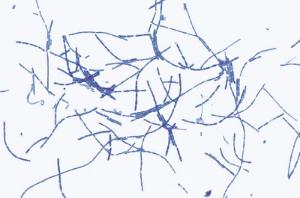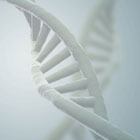Bacteriology facts; Plus a free student handout from AccessScience
Inspire students to explore the bacteriology tools used by geneticists, epidemiologists, doctors, archeologists, historians, forensic scientists, and farmers.
Access to this content is available to Ward's World readers for free from McGraw Hill's AccessScience, an award-winning, digital STEM resource containing exclusive articles written by expert scientists and engineers; biographies of well-known scientific figures; science news, videos, and animations; and much, much more.
Instructors can use AccessScience to guide students on their research project journeys, to help students understand scientific concepts, to support distance learning efforts, in flipped classroom approaches, and in countless other ways.
Ward’s World and AccessScience have partnered to offer educators a no-obligation, free trial subscription to AccessScience. Request your free trial today to discover how valuable AccessScience can be for you and your students! Get your free trial now.
The team at Ward's World is excited to make available this powerful series of science articles from McGraw Hill's AccessScience. This unique series fits our mission to find ways to bring you tips, ideas, and resources to help inspire students and guide discovery and learning. Look for a new McGraw Hill's AccessScience article to be posted each month on Ward's World.
The world of bacteria can show students how mind-blowing science can be on a microscopic scale. Whether you teach biology, chemistry, morphology, ecology, or genetics, bacteriology has a place in your lesson plan. The excitement will be infectious. And those lessons wouldn't be complete without a brief history of Louis Pasteur, the French biologist, microbiologist, and chemist born on December 27, 1822. Thanks to Pasteur's invention of a process (pasteurization) to kill bacteria, we have much tastier and safer cheese, yogurt, and juice. Of course, his enormous contributions to germ theory revolutionized our understanding and treatment of human diseases and illnesses. Thanks to Pasteur's vaccines, diseases like rabies, anthrax, cholera, TB, and smallpox were cured.
Let's break down a few of the basics of bacteriology.
What is bacteriology
Bacteriology is a branch of microbiology that involves the identification, classification, and characterization of bacterial species. The discipline of bacteriology grew from the need of physicians to test and apply the germ theory of disease and from economic concerns relating to the spoilage of foods and wine.1
Why study bacteriology
There are approximately 38,000,000,000,000 bacteria in an average human body.2 That's just the number on our body; it doesn't even begin to count the five million trillion trillion bacteria that surround us in nature, according to estimates by scientists from the University of Georgia.3 We live in a bacterial world surrounded by their rods, spheres, spirals, corkscrews, and other sizes and shapes that affect their function. With that many bacteria around, why wouldn’t we study them!
By now, everyone knows that studying bacteria helps us fight life-threatening diseases. But bacteriology has also transformed our lives and produced valuable tools used by geneticists, epidemiologists, doctors, archaeologists, historians, forensic scientists, and farmers.4 That's why we heard that big BOOM in the Biotech industry.
Students can watch our video How to prepare a bacteria sub-culture for a fun way to practice real-world bacteriology lab techniques.
Bacteria classifications
With 3.8*1013 bacteria hanging around, having criteria to classify bacteria comes in handy. Different groups of scientists may classify the same bacterial organism differently. They observe, test, then categorize them into logical relationships.
There are three main types of classification:
- Phenotypic - the observable characteristics like size, shape, and staining characteristics,
- Analytic - include whole cell lipid analysis, cell wall fatty-acid analysis, whole cell protein analysis via mass spectroscopy, and the presence of cellular enzymes via multilocus enzyme electrophoresis, and
- Genotypic - a precise method of classification that uses bacterial DNA to determine what species or family bacteria belong to.
Scientists use these classifications to help them predict a bacteria's ability to cause disease.
Other ways of classifying bacteria are based on whether they are: gram positive or gram negative, aerobic or anaerobic, autotrophic or heterotrophic, etc.
Career fields that use bacteriology
If you notice any students becoming particularly riveted by your bacteria lesson plans, they may want to know about all the career fields that apply bacteriology. Some examples include:
- Medical Bacteriologist
- Food Bacteriologist
- Water Bacteriologist
- Clinical Research Coordinators
- Medical Scientists, Except Epidemiologists
- Molecular and Cellular Biologists
- Natural Sciences Managers
- Water Resource Specialists
Bacteria have a powerful impact on life on our planet. Inspire your students to learn more about this fascinating organism and maybe they will add their own contributions to bacteriology someday.
Download McGraw Hill's AccessScience article on bacteriology above to share with your students; it has comprehensive facts to support or expand your lesson plans. The free download also includes assessment questions and answers you can use to test student understanding. It's a valuable resource covering an exciting topic.
Download McGraw Hill's AccessScience Teacher Answer key for this article here.
References: 1. https://www.ncbi.nlm.nih.gov/books/NBK8120/ 2. https://www.ncbi.nlm.nih.gov/pmc/articles/PMC4991899/ 3. https://sciencing.com/how-many-bacteria-live-earth-4674401.html 4. https://irp.nih.gov/blog/post/2014/12/why-studying-bacteria-matters
Recommended products
[StartProductBlock]

MyLab How Clean is our Home Environment
Single student kit ideal for remote learning solution; teach students about the ubiquity of bacteria right at home. Students can test the efficacy of household cleaners at killing bacteria and how cleaning affects microbial growth.
[EndProductBlock]
[StartProductBlock]

Bacterial Morphology Composite Slides
Help your students learn about the different bacterial morphologies with side-by-side comparisons of pure cultures on the same slide.
[EndProductBlock]
[StartProductBlock]

Polyethylene Transfer Pipettes
Disposable transfer pipettes for liquid handling. Ideal for microbiology, blood banking, hematology, immunology, and urinalysis
[EndProductBlock]
[StartProductBlock]

Bacteria-Viruses Living Specimens
Bacteria-Viruses Living Specimen Collections. Gram Negative. Gram Positive
[EndProductBlock]
[StartProductBlock]

Growth media for bacteria
Dehydrated Media. Planting Media. Prepared Media.
[EndProductBlock]
